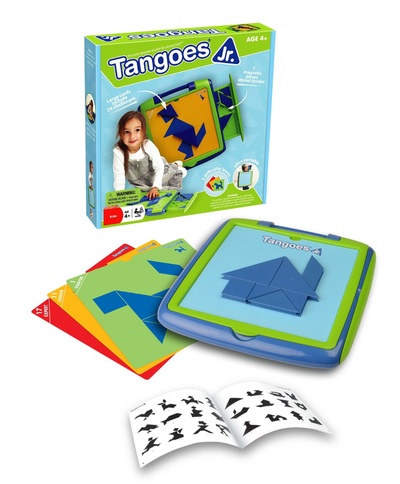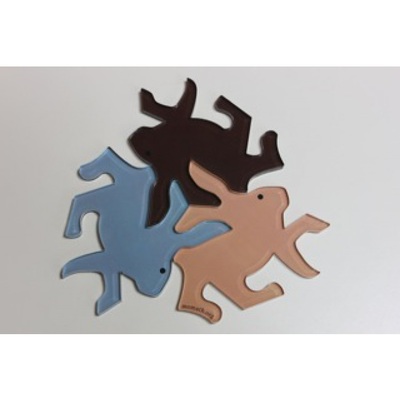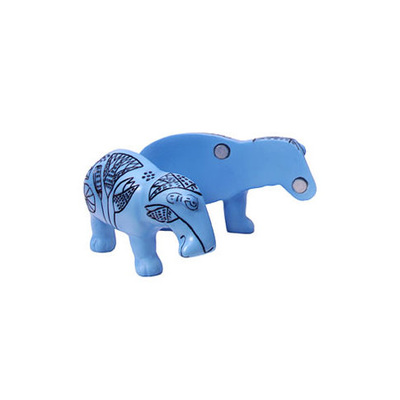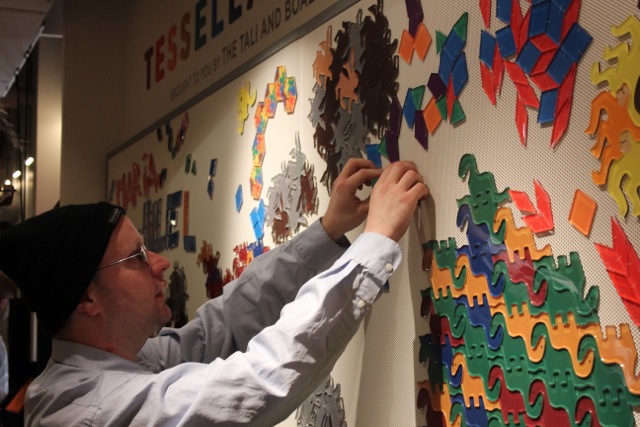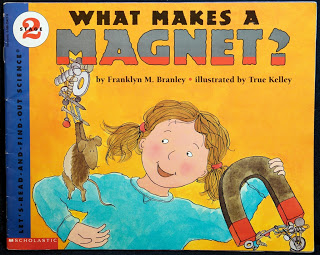A small note. If your refrigerator is not magnetic (like stainless steel), most dishwashers are still magnetic. Some doors are magnetic. And if all else fails, we painted an under the kitchen breakfast counter wall with magnetic paint (it worked fine, I just put up 5 coats of it in about an hour).
The adults who come to our house play with the magnet wall just as much as the kids do. The trick?
Have really cool magnets.
And, also, have a variety of magnets. We collect magnets in our house. All kinds. When we go somewhere new, we get magnets. And then we talk about them, remind ourselves of our memories, ask questions and storytell. As in all Quick Literacy Tips, this one spans the ages - little kids on up to adults.
Just today, in an unplanned adventure on our way home from school, Liliana and I stopped at a NYC souvenir shop. The shop owner even asked us where we were visiting from and Liliana proudly proclaimed, "BROOKLYN!" We were not far from home, but it's still fun to look.
And what we saw was pretty cool. We found an awesome Statue of Liberty magnet. On one side it has a nighttime picture of Lady Liberty and on the backside, it had facts. So, we got a little reading in with our magnet addition.
Which reminded me, use magnets to help with literacy. But not the way you think.
Here's how to build an awesome magnet collection and build literacy too.
1. Go past regular letter magnets. Have a wide variety of magnets, especially for bigger kids. Here are some ideas.
Hold your mouse over any of these pictures and you'll get my analysis on them.
All of the picture are clickable to their product pages, in case you want to know more details on any of them or you like it so much that you want to buy it. Ideas include gear magnets, your favorite quote magnets, your favorite artwork magnets, word poetry kits, city magnets, and the list goes on.
Anything you think is cool. And, bonus if you can include magnets that remind you of something from your past that you don't mind sharing with your kids. They LOVE hearing your personal stories.
All of the picture are clickable to their product pages, in case you want to know more details on any of them or you like it so much that you want to buy it. Ideas include gear magnets, your favorite quote magnets, your favorite artwork magnets, word poetry kits, city magnets, and the list goes on.
Anything you think is cool. And, bonus if you can include magnets that remind you of something from your past that you don't mind sharing with your kids. They LOVE hearing your personal stories.
Just get a few new ones, put them up in a prominent place and....
2. Watch what they do with them.
3. Ask them questions about their magnet use. Or, better yet, listen to the questions they have.
Some kids will ask questions about magnets themselves (How does that stick? Why doesn't it fall? What is that?).
Some kids will ask about the content of the magnet itself with questions like - Who made that? Who said that? Where is that? How do I play? How do I win? Will you play with me?
Some kids will ask about the content of the magnet itself with questions like - Who made that? Who said that? Where is that? How do I play? How do I win? Will you play with me?
4. Engage.
You can be as involved here as you want. I've let Liliana play with magnets while I am doing something else, we have played together, we have played the same magnets at different times.
I used to do word poetry with my students but we'd take turns adding words - and sometimes not in one go. I'd put a word up in the morning, another student would add on in the middle of the day while they were lining up, and another word would be added at another time. We'd end up with pretty funny, relatively low pressure poems by the end of the week.
These are the best asynchronous magnet games - Tangoes Jr, Ball of Whacks, and word poetry.
You can play one magnet and put the rest in a basket - ask your kid to play the next one. And back and forth. You can do one in the morning, they can do one when they get home.
I used to do word poetry with my students but we'd take turns adding words - and sometimes not in one go. I'd put a word up in the morning, another student would add on in the middle of the day while they were lining up, and another word would be added at another time. We'd end up with pretty funny, relatively low pressure poems by the end of the week.
These are the best asynchronous magnet games - Tangoes Jr, Ball of Whacks, and word poetry.
You can play one magnet and put the rest in a basket - ask your kid to play the next one. And back and forth. You can do one in the morning, they can do one when they get home.
5. Use books to support the magnet use.
If they are asking about why magnets work or how it sticks, you'll want to get some magnet specific books. Otherwise, they might ask you about the artwork on the magnet or the math game at play and you can go from there.
Here are some quick suggestions:
Here are some quick suggestions:
|
This book is great for the Pre-K set who is asking questions about magnets, or just playing with them.
This book is written by an educator and so will have a little more sticking power. Ha! |
|
For a child who is already in school, this book is geared toward 2nd-4th grade students, even though it is a Guided Reading Level L book.
Franklyn Branley is a seasoned kids' science writer. In 1960, he originated the Let's-Read-and-Find-Out Science series, dedicated to explaining science to young children and encouraging them to explore their world You're in the right hands with this book. |
|
This book is for an older kid who is interested in electricity and magnets. It's a great companion to any science unit from school - or if magnets have dropped off the school curriculum already, this is a good text to use at home so you can continue the work. Have fun!
|
And, if your child is interested in the content of the magnet, base your book choices on that.
Enjoy!
If you like this idea, please share it!






